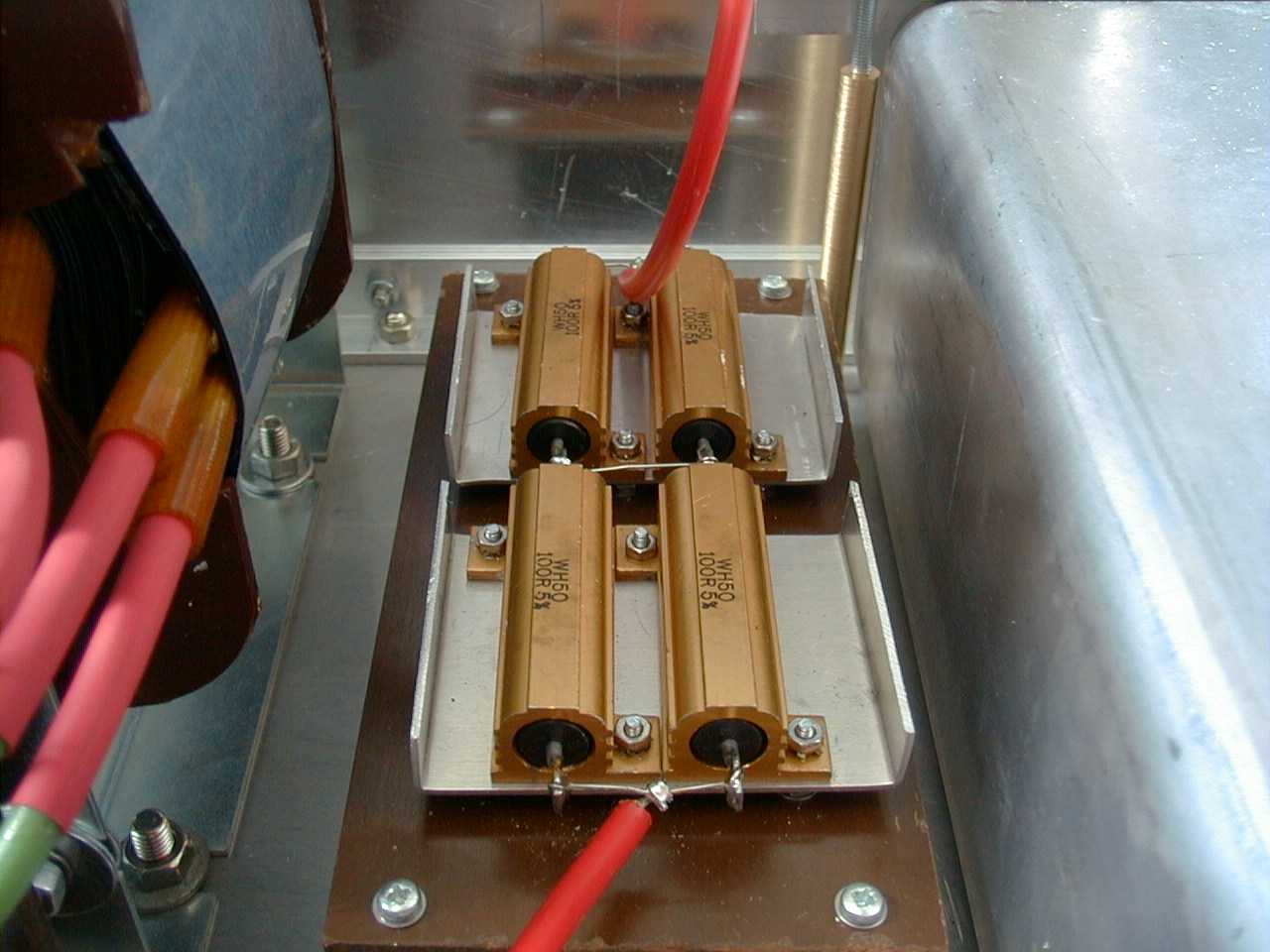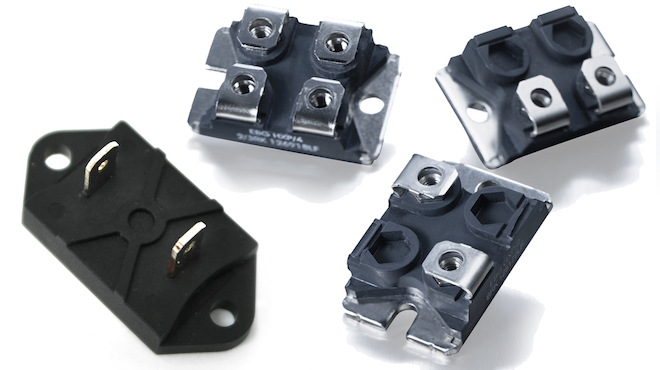Position:Home » Technical Articles
Resistors' Usage in AC-DC and DC-DC Power-Supply Designs
Writer:Microhm Page View:Date:2020-01-07
Almost every application for resistors in power supply design has different specification priorities and performance requirements. These include resistors that need to be able to handle high voltage, current and power, as well as ones that require low tolerances. Often specialized attributes are needed, like surge capability or negative TCR.
Resistors are playing important roles in regulating the supply output and protecting the supply from faults. Besides linear regulators and switched-mode power supplies, resistors also has other usage in AC-DC and DC-DC supplies.

Inrush limiting resistors limit the amount of current that can surge when AC-DC supplies are initially switched on and the storage capacitor is charging. These resistors are usually of a very low value and are designed in series with the AC power line. For higher-power supplies, negative temperature coefficient (NTC) resistors are often used for this purpose. These resistors have a resistance that drops as they self-heat. One downside to using this type of resistor is that during operation the temperature must be kept regular to ensure the low resistance is maintained. A third type of solution involves using pulse-resistant resistors, which are normally energy-rated in Joules. This gives a better idea of their capabilities than the normal continuous power rating that wattage designates.
Bleed resistors are mainly used to discharge capacitors in the circuit. Microhm Electronics' NUAL series, NLR140U and FLR200 are suitable as bleeder resistors. They are situated in parallel with the load and are used in AC-DC and DC-DC converters for discharging the smoothing capacitors and reservoir capacitors respectively. The capacitors maintain their charge after the supply is switched off and can be hazardous to users. There are two main points to balance when choosing resistors for this task: they should be a high enough resistance to consume little power when the circuit is operational, while being low enough value to discharge the capacitors quickly.
Balancing resistors modulate a load current when using more than a single supply. Often, using more than one DC-DC converter in a parallel arrangement can be cheaper, while also being more energy efficient and compact than using a single high power supply. When designing this type of circuit, it is not possible to just tie the outputs together; there must be a way to ensure the load is shared equally.

This method of load sharing is also used in other types of power-supply designs, especially those using power transistors. Multiple transistors in parallel supply the load, and load-sharing resistors are used in series.
High voltage dividers are used to provide the feedback to the regulation circuit. These resistors can often have a secondary purpose, such as monitoring the high voltage supply in defibrillators, charging the storage capacitor and switching off the supply at the desired charge level.
High current sensing is used for measuring the supply current. The measurement is made using shunt ammeter principles, where a low value resistor is placed in series and the voltage drop is measured to calculate the current. A designer of this type of circuit must choose between a low value resistor to minimize heat generated and the loss of power, and a high resistance for easier measurement. Microhm Electronics provides resistors with resistance value from micro-ohm to T ohm for engineers' options.
Resistors are playing important roles in regulating the supply output and protecting the supply from faults. Besides linear regulators and switched-mode power supplies, resistors also has other usage in AC-DC and DC-DC supplies.

Inrush limiting resistors limit the amount of current that can surge when AC-DC supplies are initially switched on and the storage capacitor is charging. These resistors are usually of a very low value and are designed in series with the AC power line. For higher-power supplies, negative temperature coefficient (NTC) resistors are often used for this purpose. These resistors have a resistance that drops as they self-heat. One downside to using this type of resistor is that during operation the temperature must be kept regular to ensure the low resistance is maintained. A third type of solution involves using pulse-resistant resistors, which are normally energy-rated in Joules. This gives a better idea of their capabilities than the normal continuous power rating that wattage designates.
Bleed resistors are mainly used to discharge capacitors in the circuit. Microhm Electronics' NUAL series, NLR140U and FLR200 are suitable as bleeder resistors. They are situated in parallel with the load and are used in AC-DC and DC-DC converters for discharging the smoothing capacitors and reservoir capacitors respectively. The capacitors maintain their charge after the supply is switched off and can be hazardous to users. There are two main points to balance when choosing resistors for this task: they should be a high enough resistance to consume little power when the circuit is operational, while being low enough value to discharge the capacitors quickly.
Balancing resistors modulate a load current when using more than a single supply. Often, using more than one DC-DC converter in a parallel arrangement can be cheaper, while also being more energy efficient and compact than using a single high power supply. When designing this type of circuit, it is not possible to just tie the outputs together; there must be a way to ensure the load is shared equally.

This method of load sharing is also used in other types of power-supply designs, especially those using power transistors. Multiple transistors in parallel supply the load, and load-sharing resistors are used in series.
High voltage dividers are used to provide the feedback to the regulation circuit. These resistors can often have a secondary purpose, such as monitoring the high voltage supply in defibrillators, charging the storage capacitor and switching off the supply at the desired charge level.
High current sensing is used for measuring the supply current. The measurement is made using shunt ammeter principles, where a low value resistor is placed in series and the voltage drop is measured to calculate the current. A designer of this type of circuit must choose between a low value resistor to minimize heat generated and the loss of power, and a high resistance for easier measurement. Microhm Electronics provides resistors with resistance value from micro-ohm to T ohm for engineers' options.
Latest News
- Resistor's role in measuring and correcting LED,,,
- Single through-hole resistors' characteristics ,,,
- Why shunt resistors for current sense applicati,,,
- Metal-film resistors with small size, high resi,,,
- 36W High-Current Shunt Resistors MMS8420,,,
- 1W Surface Mount Resistor MPR1206,,,
- An Overview of Microhm Electronics' Resistor Pr,,,
- More anti-sulfur resistors used in harsh envir,,,
- Resistance changes with temperature,,,
- 140W TO247 High Power Heatsinkable Resistor,,,
- MMS5930 is ideal for current sensing in industr,,,
- Shunt resistors selection for engineers' design,,,
- Considerations for choosing precision resistors,,,
- Ceramic Encased Cement Resistors NWH Series for,,,
- Resistors for Passive Balancing in Battery-Pow,,,
Hot Articles
- Microhm will take part in 10th Automotive World,,,
- Thanks for Visiting Microhm's Booth E5-5706 in ,,,
- Resistors in Short Supply: Blame Cars,,,
- New lunch: High Power Precision Shunt Resistor,,,,
- How to Test a Resistor,,,
- Innovative Technology, Future Electric: Electri,,,
- What is Precision Resistors?,,,
- SMD Resistors Sizes and Packages,,,
- The Construction and Features of Metal Film Res,,,
- What is a TO-220 Resisor?,,,
- Hot Selling Products: Precision Shunt Resistors,,,
- How to Calculate the Equivalent Resistance Valu,,,
- What is a Fixed Resistor?,,,
- Resistors in LED Circuits,,,
- Resistors Types and Materials Overview,,,
Resistance applications
- Shunt Resistor MMS8420 for High Current Stable ,,,
- Carbon Film Resistors' Features and Application,,,
- The Main Application for High Precision and Low,,,
- Industrial Roberts Applied to Solar Photovoltai,,,
- The Four Important Functions of Alloy Resistors,,,
- Why Zero-Ohm Resistors?,,,
- Difference Between High Precision Resistors and,,,
- BMS for New Energy Vehicle,,,
- Miniature future for passive electronic compone,,,
- Select the Right Resistor for Harmonic Filterin,,,
- The Measurement Accuracy of Automotive Shunt is,,,
- Surface Mount Resistor's Size and Package ,,,
- Precision Resistors' Construction and TCR,,,
- Urbanization Development Bringing the Transform,,,
- Heater Blower Motor Resistor in Air Conditioner,,,
